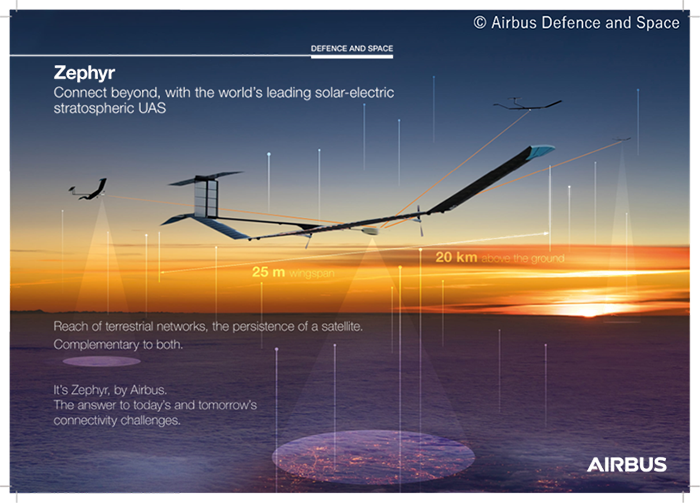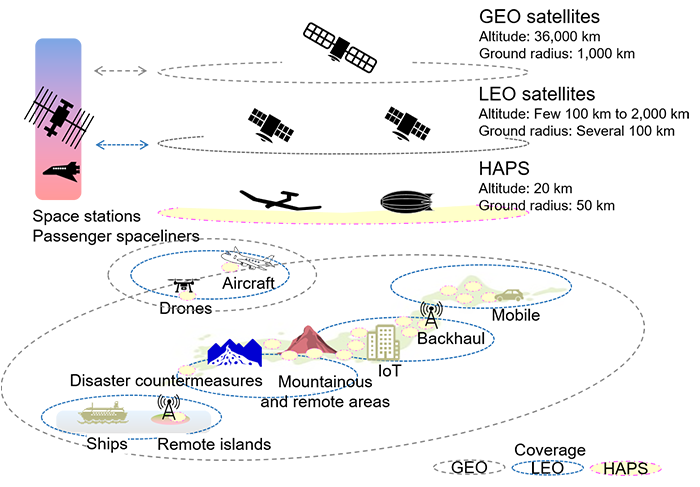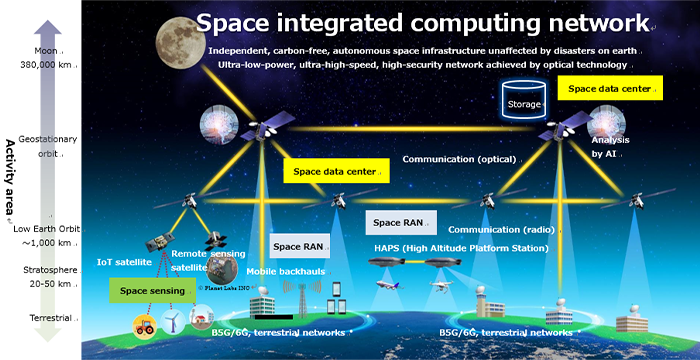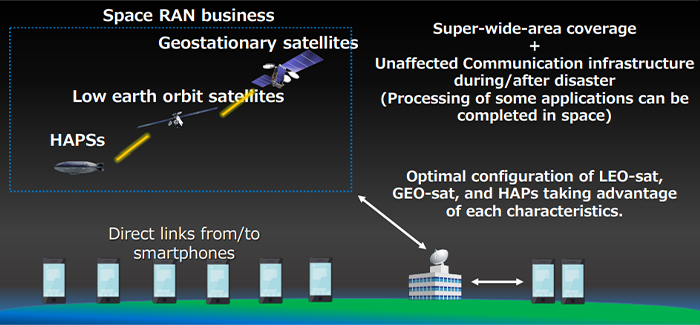
Airbus, NTT, DOCOMO Explore HAPS for Global Connectivity
Airbus, Nippon Telegraph and Telephone Corporation (NTT), NTT DOCOMO, INC. (DOCOMO) and SKY Perfect JSAT Corporation (SKY Perfect JSAT) jointly announced that they have begun studying the feasibility of collaborating on future high-altitude platform stations (HAPS)-based connectivity services as part of a future space-based wireless connectivity ecosystem.
Launched with a memorandum of understanding (MOU), the study will attempt to identify the early deployment requirements of a HAPS-based network. The collaboration will investigate the use of the Airbus Zephyr, the leading solar-powered stratospheric unmanned aerial system (UAS), and the wireless communication networks of NTT, DOCOMO, and SKY Perfect JSAT in order to test HAPS connectivity, identify practical applications, develop required technologies, and ultimately launch space-based wireless broadband services. high-altitude platform stations
Fig. 1 Airbus “Zephyr” HAPS aircraft
In the global push to further advance 5G and eventually introduce 6G, initiatives are under way to expand coverage worldwide, including in the oceans and in the air. Such initiatives will include HAPS, which fly in the stratosphere about 20 km above the earth, and non-terrestrial network (NTN) technologies using geostationary-orbit (GEO) satellites and low-earth-orbit (LEO) satellites. HAPS networks are deemed to be a relatively easy solution for air and sea connectivity and an effective platform for deploying disaster countermeasures and many industrial applications. The provision of space-based radio access network services using NTN technologies, collectively called Space RAN (radio access network), is expected to support worldwide mobile communications with ultra-wide coverage and improved disaster resistance as well enhanced 5G and 6G. In addition, HAPS platforms can also interconnect to the nearest terrestrial network gateway and extend the reach of existing mobile services directly to end-user devices, providing service options including rural, emergency, and maritime connectivity.
 Fig. 2 Communication via satellites and HAPS
Fig. 2 Communication via satellites and HAPS
 Fig. 3 Configuration of space integrated computing network
Fig. 3 Configuration of space integrated computing network
 Fig. 4 Space RAN system structure
Fig. 4 Space RAN system structure
With the signing of the MOU, the four companies will discuss and identify possible future developments necessary to unlock future HAPS-based connectivity services, lobby for standardization and institutionalization of HAPS operations, and explore business models for commercializing HAPS services.
Specific themes will include the applicability of HAPS for mobile connectivity on the ground and base station backhaul,1 the performance of various frequency bands in HAPS systems, the technological considerations for linking HAPS with satellites and ground base stations, and the establishment of a cooperative system to test a network combining NTN technology, satellites, and HAPS.
As separately announced on November 15, 2021, DOCOMO and Airbus have successfully conducted a propagation test between the ground and a “Zephyr S” HAPS aircraft in the stratosphere, demonstrating the possibility of providing stable communication with such a configuration.
-
Base station backhaul refers to a fixed line that supports high-speed, high-capacity information transmission between a large number of wireless base stations in a mobile communications network and the core network.













